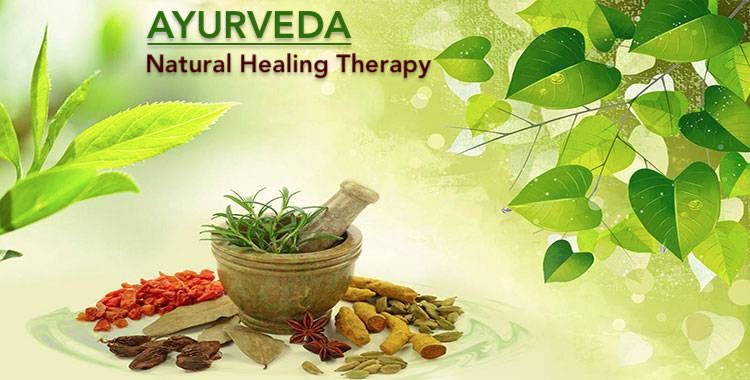Ayurveda

Today, throughout the world people are recognising the significance of maintaining contact with nature to achieve the best physical and spiritual well-being.
Ayurveda, a concept of a 5,000-year-old natural healing therapy that has its origins in the Vedic culture of India that offers the knowledge of how nature is linked to a whole healthy life.
Ayurveda has been enjoying a major revivification in both its native land and throughout the universe.
Tibetan medicine and traditional Chinese medication each have their roots in Ayurveda. Early Greek medicine additionally embraced many concepts at the beginning defined within the classical ayurvedic clinical texts dating back numerous thousands of years.
More than just a mere system of treating illness, Ayurveda is a scientific discipline of life (Ayur mean life, Veda mean knowledge of life and longevity). It provides a body of wisdom designed to assist humans to live vital while understanding their complete human potential. Offering guidelines on ideal daily and seasonal routines, diet, behavior and the right use of our senses, Ayurveda reminds us that health is the balanced and dynamic integration among our surroundings, body, thoughts, and spirit.
Ayurveda names seven basic tissues (Dhatu), which can be plasma (rasa), blood (rakta), muscle tissues (māmsa), fats (meda), bone (asthi), marrow (majja), and semen (shukra). Like the medicine of classical antiquity, ayurveda has historically divided bodily materials into five classical factors, (sanskrit) panchamahabhuta, viz. Earth, water, hearth, air, and ether. There are also twenty gunas (traits or characteristics) that are taken into consideration to be inherent in all depend. These are organized in ten pairs: heavy/light, cold/warm, unctuous/dry, dull/sharp, stable/mobile, soft/hard, non-slimy/slimy, smooth/coarse, minute/gross, and viscous/liquid.
THREE-DOSHA
Recognising that human beings are part of nature, Ayurveda describes the three essential energies that govern our inner and outer environments: motion (Movement) transformation, and shape (structure). Recognized in Sanskrit as Vata (Wind), Pitta (Fire), and Kapha (Earth), these chief forces are responsible for the characteristics of our mind and body.
BODY TYPES
Each people has a unique percentage of those 3 forces that shapes our nature. If Vata is dominant, we have a tendency to be skinny, light, enthusiastic, energetic, and changeable.
If Pitta predominates, we tend to be extreme, intelligent, and intention-oriented and we have a sturdy appetite for life.
When Kapha prevails, we tend to be smooth-going, methodical and nurturing. Despite the fact that each people have all 3 forces, most people have one or two factors that predominate.
For every detail, there is a balanced and imbalance expression. Whilst VATA is balanced, someone is active and creative, however, while there’s too much motion in the system, someone has a tendency to experience anxiety, insomnia, dry skin, constipation, and problem focusing.
While PITTA is functioning in a balanced way, a person feels comfortable high-temperature, he will have a good leader and a great speaker, Whilst pitta is out of stability, someone has a tendency to be compulsive and irritable and can be afflicted by indigestion or an inflammatory condition.
Whilst KAPHA is balanced, someone is good, supportive, and strong but whilst Kapha is out of stability, someone may revel in sluggishness, weight gain, and sinus congestion.
Ayurveda is a holistic tradition and way of life that can assist each of us to exact and celebrate our capacity for wellness. Ayurveda can help us:
- Sync up with our truest internal nature
- Honor and broaden our strengths
- Hone in on our project areas
- Redirect detrimental dispositions
- Hold balance in the face of adversity
PRACTICE
Ayurvedic doctors regard physical existence, mental existence, and personality as a unit, with every element having the ability to influence the others. That is a holistic method used throughout diagnosis and remedy and is a fundamental factor of ayurveda. Some other part of ayurvedic remedy says that there are channels (srotas) which delivery fluids and that the channels may be unfolded via massage remedy the usage of oils and swedana (fomentation). Unhealthy, or blocked, channels are a concept to purpose ailment.
DIAGNOSIS – ANALYSIS
Ayurveda has eight methods to diagnose sickness, referred to as Nadi (pulse), Mootra (urine), Mala (stool), Jihva (tongue), Shabda (speech), Sparsha (touch), Druk (vision), and Aakruti (look).
Ayurvedic practitioners technique diagnosis by using the 5 senses. As an instance, hearing is used to look at the situation of respiratory and speech. The study of the lethal points or Marman Marma is of special significance.
REMEDY AND PREVENTION
Two of the eight branches of classical ayurveda cope with a surgical procedure (Śalya-Cikitsā And Śālākya-Tantra), however, present-day ayurveda has a tendency to stress achieving energy by means of constructing a wholesome metabolic system and keeping accurate digestion and excretion. Ayurveda additionally makes a specialty of exercising, yoga, and meditation. one kind of prescription is a Sattvic food plan.
Ayurveda follows the concept of Dinacharya, which says that natural cycles (waking, sleeping, running, meditation and many others.) are critical for fitness. Hygiene, including regular bathing, cleaning of teeth, tongue scraping, skin care, and eye washing, is also a primary practice.
